Written by Alex Andrea Pauleen Dela Cruz
KS Student Intern
UP Resilience Institute (UPRI), in partnership with ScienceKonek, hosted a NOAH orientation in Brgy. Manggahan, Pasig City last July 16, 2025. The session explained the various accessible and Filipino-based Disaster Resilience tools residents and officials could use in hazard assessment and equipped them with skills in navigating UPRI’s flagship applications Project NOAH and NOAH Studio.

Brgy. Manggahan officials, ScienceKonek, and UPRI representatives (through the Knowledge Sharing Division)
conducted a training session on the use of Project NOAH and NOAH Studio.
The seminar started at 2:00 PM in the Manggahan Barangay Hall, Pasig City. ScienceKonek founder Ralph T. Abainza thanked the seminar participants for attending the session and gave a brief overview on the purpose of training. Abainza notes that with the help of UPRI on the usage of these tools, Brgy. Manggahan’s officials can be better equipped with the knowledge in preparation and decision-making in disaster resilience work. Afterwards, Abainza introduced the guest speaker Dr. Likha Minimo, current director of the UPRI – Knowledge Sharing (KS) Division, to the participants.
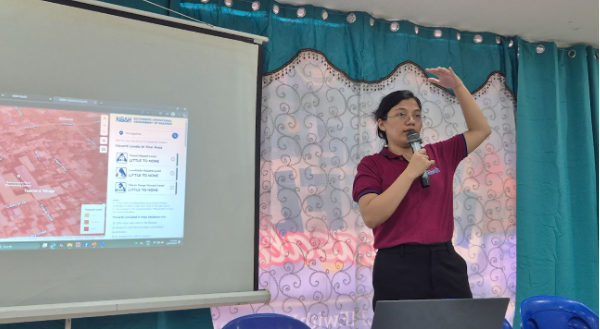
UP Resilience Institute – Knowledge Sharing Division’s Director, Dr. Likha Minimo,
teaches Brgy. Manggahan’s officials on how to use the NOAH website.
Dr. Minimo facilitated the disaster resilience tools training session. Before starting with the orientation proper, Dr. Minimo asked the participants about their experience in public service work and their personal experiences with disasters and disaster preparedness. The personal experiences mentioned by the participants were then used as a background for introducing important concepts in disaster resilience work. One of these concepts is cascading hazards, which is a term used to explain the overlap of hazards with one another.
After providing an overview on the basic concepts in disaster resilience, Dr. Minimo discussed examples of methods and web applications used in Risk Assessment. These included websites like HazardHunterPH, Windy, Meteologix, PANaHON and iHeatMap; and specific tools within NOAH Studio like the Internet-of-things and Impact-based Assessment; and the Lyfsaver App to report hazard incidents in the country.
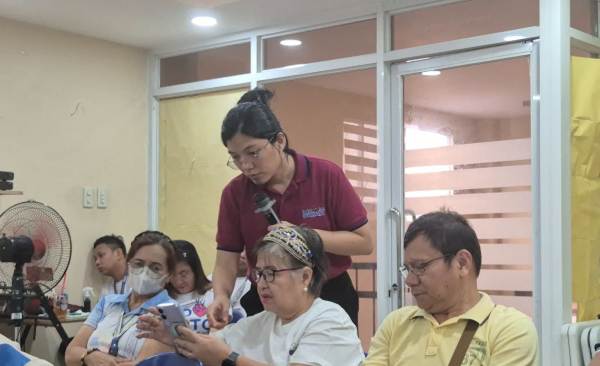
Dr. Minimo guides participants on the usage of NOAH on mobile.
For the demonstration, Dr. Minimo taught participants on how to navigate the NOAH Website. With the help of some ScienceKonek members, she guided the participants on navigating the mobile version of NOAH for quick hazard assessments. Dr. Minimo also did a live demonstration on the use of NOAH Studio and explained its functions for emergency preparedness planning in the barangay level.
Dr. Minimo ended her session with a brief introduction of other knowledge products done by UPRI. She presented the different methods of UPRI in disseminating information about disaster resilience, such as collaborating with LGUs in creating development plans and using a multi-media approach for disaster resilience education.
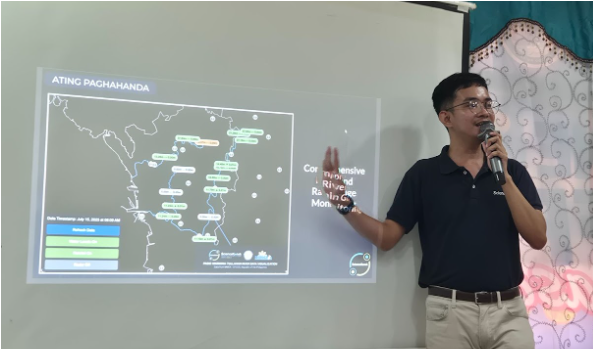
ScienceKonek founder Ralph T. Abainza provides barangay officials a weather report for the incoming week.
After the lecture and demonstration, ScienceKonek provided a weather forecast for Brgy. Manggahan and gave some recommendations regarding the enhanced habagat (or southwest monsoon) effects that Manggahan may experience this coming week. Abainza, who led the report, recommended that residents prepare for the rainy weather and recommended rescheduling outdoor activities just in case.
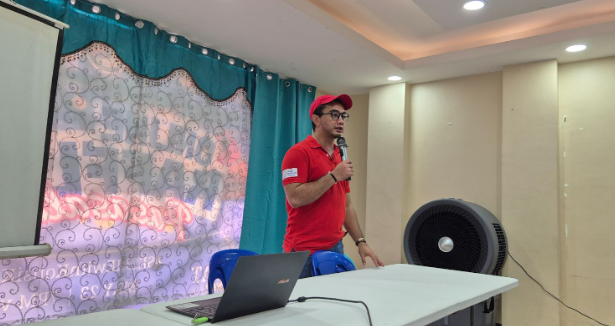
Brgy. Manggahan Captain Hon. Quinn Cruz gives his closing remarks for the program.
To end the session, the Brgy. Manggahan officials gave their closing remarks where they emphasized the power of cooperation by the residents to ensure the implementation of these disaster resilience projects would come to fruition.
Meanwhile, Hon. Cruz wrapped up the entire session by explaining the current situation of Manggahan in terms of policy implementation. According to Hon. Cruz, Brgy. Manggahan has been investing in projects that support development in the areas of disaster resilience such as hazard monitoring technologies and proper drainage systems for the area. With that, Hon. Cruz thanked UPRI for their support in filling the knowledge gaps of Brgy. Manggahan’s barangay officials. He also hoped that the officials’ newly acquired knowledge of Project NOAH would assist them in decision-making and communications when implementing development projects. Hon. Cruz also thanked ScienceKonek for their technical assistance in creating Brgy. Manggahan’s development plan, as they have helped immensely in identifying the hazard assessments in the area.
To end, Hon. Cruz hopes that their program measures are effective enough to mitigate the floods in their area. He explained, “In terms of disasters, dalawa lang ang kailangan nating tugunan. Kailangan nating palakasin ang ating social systems, kung saan papalakasin natin ang kahandaan ng mga tao, at syempre kailangan nating palakasin yung ating mga imprastraktura na nagiging cause ng mga hazards and disaster.” (In terms of disasters, there are two factors we have to strengthen and support. We have to strengthen our social systems by increasing the residents’ preparedness for disaster resilience, and we have to strengthen our infrastructures since they may cause hazards and disasters in the future.)
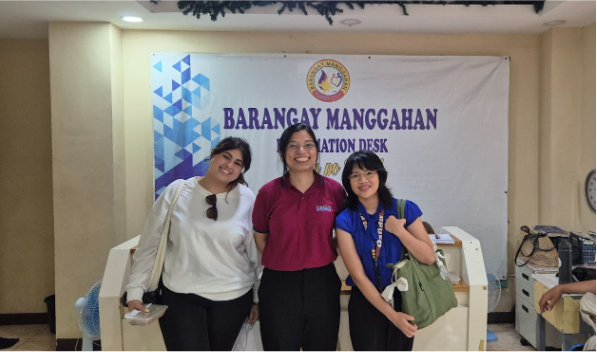
UPRI was represented by the KS Division. Depicted in picture (From L to R):
Student Intern Kiana Amarnani, Director Dr. Likha Minimo, and Student Intern Alex Andrea Pauleen Dela Cruz
